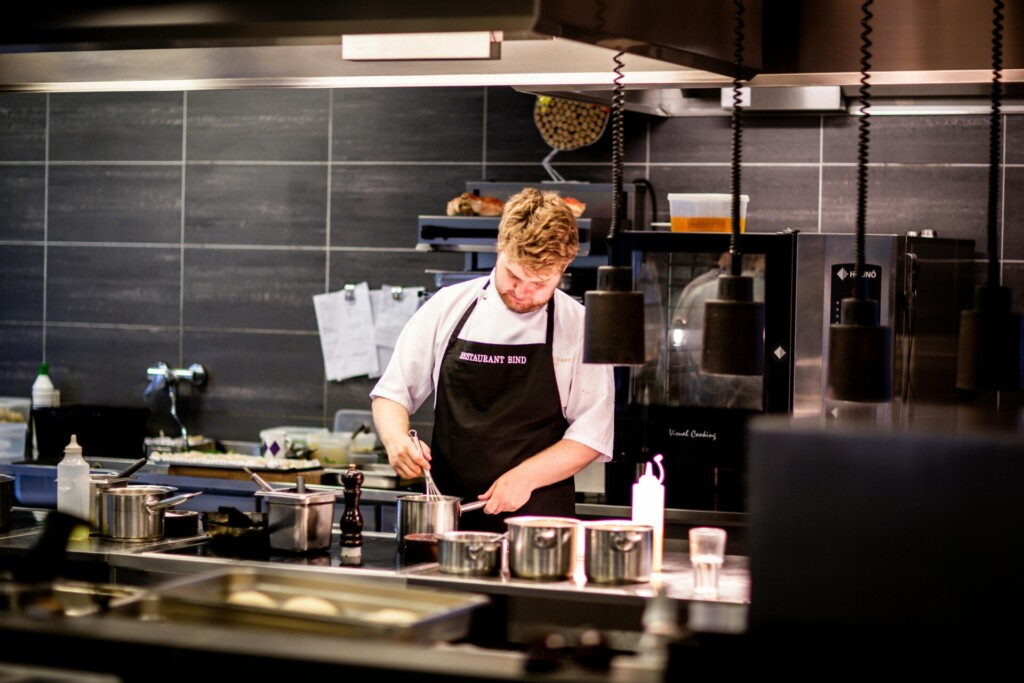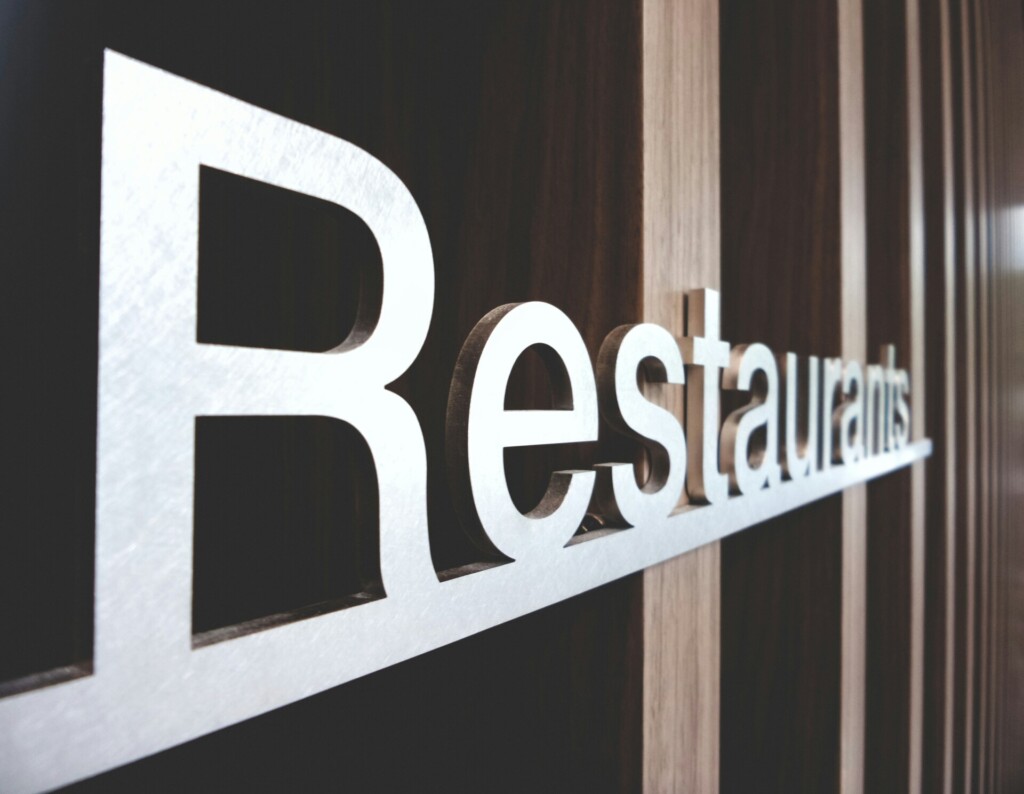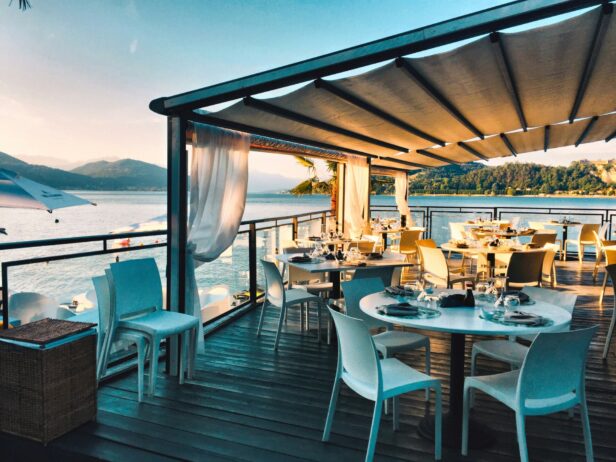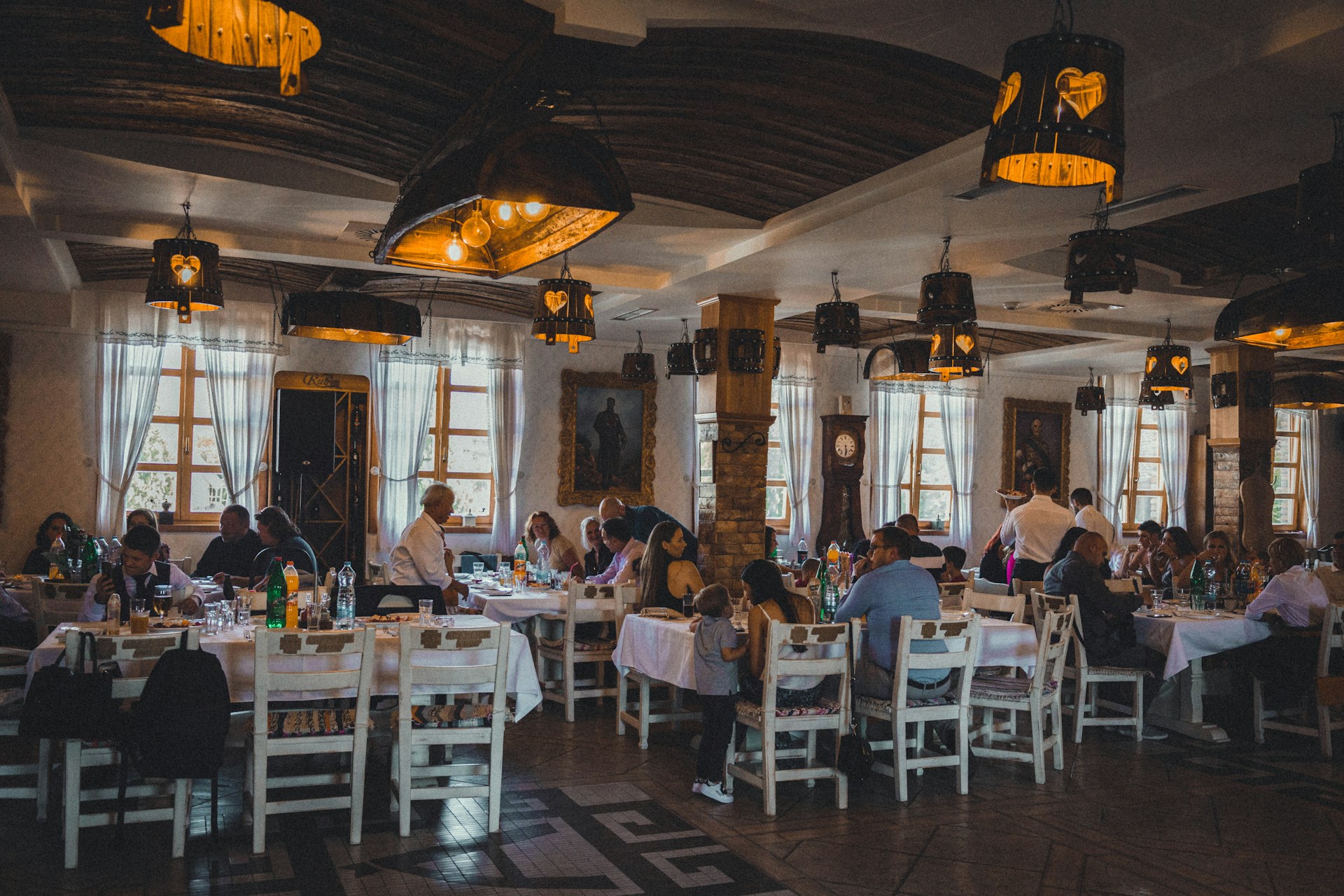Celina is thriving. As one of the fastest-growing cities in North Texas, it is attracting new residents and businesses rapidly. This growth is increasing the demand for fresh dining options and efficient restaurant build-outs across the city.
For restaurateurs and property owners eager to capitalize on Celina’s expansion, partnering with an experienced commercial contractor is crucial. Leading restaurant builders in the area offer comprehensive services, including ground-up construction, tenant improvements, and renovations of existing spaces.
At EB3 Construction, we take a full-service approach to restaurant projects in Celina. Our team guides clients from initial concept and design through final execution, maintaining clear communication and documenting progress every step of the way. Whether starting with a blank shell or reimagining a second-generation space, we help bring dining visions to life efficiently and on-budget.
Which Services Cover a Restaurant Project from Shell to Opening?

At EB3 Construction, we offer comprehensive services to transform your restaurant project from an empty shell into a fully operational space. Our expertise spans the essential phases of restaurant construction in Celina:
Design and Pre-Construction
- Design support and consultation
- Permitting assistance
- Project planning and budgeting
Shell Space Build-Out
- Core and shell improvements
- MEP system installation
- Interior framing and drywall
Tenant Improvements
- Custom finishes and fixtures
- Kitchen equipment installation
- Dining area build-out
Specialized Restaurant Services
- Bar and beverage system installation
- Walk-in cooler and freezer construction
- Grease trap and ventilation system setup
Final Stages
- Health and safety compliance
- Final inspections and certifications
- Punch list completion
Our team manages everything from basic preparations to the final touches, ensuring your restaurant is ready for its grand opening. Additionally, we offer remodeling services for existing spaces and disaster recovery work when needed. With our established quality control processes, we deliver hospitality spaces that are both functional and inviting.
| Task | Timeline |
| Architectural Design & MEP Plans | 4 to 6 weeks |
| Construction Bidding | 2 to 3 weeks |
| Plan-check/Permits | 8 to 10 weeks |
| Fast Food Restaurant Construction | 8 weeks |
| Fast Casual Eatery Construction | 10 to 12 weeks |
| Full-Service or Fine Dining Establishment | 20 weeks or more |
By offering this complete range of services, we streamline the construction process and assist restaurant owners in bringing their vision to life in Celina’s expanding market. Our approach combines efficiency with attention to detail, positioning your new restaurant for success from day one.
How Do Permitting, Design, and Tenant Improvement Allowances Work in Celina?
The commercial construction process in Celina involves several key steps concerning permitting, design, and tenant improvements. As general contractors, we coordinate closely with local zoning officials and the permitting department to ensure all necessary approvals are obtained. Our team guides clients through the entire process, from initial layout and design to final inspections.
For permitting, we compile and submit comprehensive construction documents to the City of Celina, which typically include detailed architectural drawings, engineering plans, and other required documentation. The city’s review process usually takes 3-5 weeks for commercial projects. We maintain close communication with the building department to promptly address any questions or requests for additional information.
On the design side, we work with clients to develop plans that meet their functional needs while complying with local building codes. For leased spaces, we coordinate closely with landlords to align the scope of work with any existing tenant improvement allowances (TIAs). Documenting the agreed-upon improvements early in the process is crucial for staying on schedule and budget.
Speaking of TIAs, these can be a valuable way for tenants to offset build-out costs in leased commercial spaces. The allowance is typically expressed as a dollar amount per square foot. For example, a landlord may offer $30 per square foot on a 2,500 square foot space, providing $75,000 towards improvements. We help clients maximize their TIA by carefully scoping work and obtaining competitive bids from subcontractors.
Throughout the project, we provide frequent updates to all stakeholders, including weekly schedule reviews and progress reports. Staying on top of inspections and permit approvals is critical; we coordinate closely with city officials to keep things moving. For leased spaces, we also keep landlords informed of progress and any proposed changes that may affect the TIA.
Key steps for a smooth permitting and build-out process:
- Confirm TIA amount and terms with landlord (for leased spaces)
- Align project scope and budget expectations early
- Submit complete, code-compliant drawings to the city
- Track permit status and promptly address city comments
- Review project schedule and budget weekly
- Document any changes impacting the original scope or TIA
By carefully managing the permitting, design, and TIA process, we help ensure commercial projects in Celina stay on track. Our experienced team navigates potential challenges to deliver spaces that meet our clients’ needs on time and on budget.
What MEP and Kitchen Requirements Should Restaurants Plan For?

When planning a restaurant build-out or remodel in Celina, early coordination of mechanical, electrical, and plumbing (MEP) systems is crucial for a smooth construction process and a code-compliant result. Local restaurant projects increasingly seek MEP engineering support during the initial planning stages to properly address key requirements:
Kitchen Ventilation
Proper ventilation is essential in commercial kitchens to remove heat, smoke, grease, and odors. We work closely with restaurant owners to design hood systems and ductwork that meet local codes while accommodating the specific cooking equipment planned. Factors we consider include:
- Type and placement of cooking appliances
- Exhaust fan sizing and placement
- Make-up air requirements
- Fire suppression integration
Getting ventilation right from the start prevents costly rework and ensures a comfortable, safe kitchen environment.
Electrical Load Planning
Commercial kitchens have significant power needs that must be carefully calculated. We analyze the electrical requirements for all planned equipment, lighting, and systems to determine proper load distribution and panel sizing. This may include:
- Three-phase power for large appliances
- Dedicated circuits for specific equipment
- Lighting and control systems
- Emergency power considerations
Proper electrical design prevents overloads and enables future flexibility as kitchen needs evolve.
Plumbing Distribution
An efficient plumbing layout is crucial for restaurant operations. We design water supply, drainage, and gas distribution systems to support all kitchen equipment and fixtures. Key considerations include:
- Hot water heater sizing and placement
- Grease interceptor requirements
- Floor drain locations
- Gas line sizing for cooking equipment
Thoughtful plumbing design improves kitchen workflow and supports proper sanitation practices.
HVAC Integration
Heating, cooling, and ventilation must be carefully integrated into restaurant spaces. We assess factors like:
- Zoning for dining vs. kitchen areas
- Make-up air coordination with kitchen exhaust
- Equipment heat load calculations
- Energy efficiency opportunities
A well-designed HVAC system maintains comfort for guests and staff while controlling energy costs.
Code Compliance
Restaurant MEP systems must adhere to numerous local, state, and national codes. We stay current on all relevant regulations to ensure designs meet or exceed requirements, including:
- Health department standards
- Building and fire codes
- ADA accessibility guidelines
- Energy efficiency standards
Code-compliant designs streamline the permitting and inspection process.
CAD Documentation
Detailed CAD plans are invaluable for coordinating MEP systems with the overall restaurant layout. We produce comprehensive drawings showing:
- Equipment locations and clearances
- Ductwork and piping routes
- Electrical panel schedules
- Fixture schedules and specifications
These drawings serve as a roadmap for construction and help prevent conflicts between systems.
By engaging MEP engineers early in the restaurant planning process, owners can avoid costly mistakes and ensure their kitchens are built for optimal performance. We recommend collecting any existing as-built information and finalizing equipment selections before beginning MEP design. This allows us to create the most accurate and efficient systems for your unique needs.
At EB3 Construction, we have extensive experience managing MEP-heavy scopes during restaurant remodels and upgrades. Our team coordinates all mechanical, electrical, plumbing, and HVAC improvements to deliver code-compliant solutions that enhance kitchen functionality. Contact us to discuss how we can support the MEP planning for your next restaurant project in Celina.
| MEP Aspect | Considerations |
| Kitchen Ventilation | Type and placement of cooking appliances, Exhaust fan sizing and placement, Make-up air requirements, Fire suppression integration |
| Electrical Load Planning | Three-phase power for large appliances, Dedicated circuits for specific equipment, Lighting and control systems, Emergency power considerations |
| Plumbing Distribution | Hot water heater sizing and placement, Grease interceptor requirements, Floor drain locations, Gas line sizing for cooking equipment |
| HVAC Integration | Zoning for dining vs. kitchen areas, Make-up air coordination with kitchen exhaust, Equipment heat load calculations, Energy efficiency opportunities |
| Code Compliance | Health department standards, Building and fire codes, ADA accessibility guidelines, Energy efficiency standards |
| CAD Documentation | Equipment locations and clearances, Ductwork and piping routes, Electrical panel schedules, Fixture schedules and specifications |
What timeline, budget, and communication should you expect?
When working with a general contractor, understanding the project’s timeline, budget considerations, and communication expectations is crucial for a smooth construction process. Here’s what you can typically expect:
Project Timeline
The timeline for your construction project can vary significantly based on its scope and complexity. Small renovations may take a few months, while larger builds could extend beyond a year. We approach each project with careful planning to provide realistic timelines, but unforeseen circumstances can affect schedules.
To keep you informed throughout the process, we use advanced project management software. This allows us to share:
- Weekly progress photos
- Detailed progress logs
- Up-to-date project schedules
Budget and Cost Structures
Understanding the financial aspects of your project is essential. While specific costs can vary, here are some general ranges to consider:
- Hourly rates: $50 – $150
- Markup percentage: 10% – 20% of total project costs
- Down payments: 10% – 25% of estimated project cost
Keep in mind that these figures can fluctuate based on project complexity, location, and current market conditions. We’re committed to transparent pricing and will provide detailed breakdowns in our project proposals.
Communication Expectations
Clear, consistent communication is the cornerstone of successful project management. We prioritize keeping you informed and involved during the construction process. You can expect:
- Regular project updates
- Prompt responses to your questions and concerns
- Scheduled check-ins to discuss progress and any necessary adjustments
Important Questions to Ask Before Hiring
To ensure you’re fully prepared, consider asking potential contractors the following questions:
- What type of insurance coverage do you carry?
- Can you provide references from similar projects?
- Who will supervise the project on-site?
- How do you select and manage subcontractors?
- Will you handle all necessary permits?
- What is your preferred method of communication during the project?
The specific timeline, budget, and communication plan for your project will depend on its unique scope and requirements. We’re committed to working closely with you to develop a tailored approach that meets your needs and ensures a successful outcome.
Conclusion: Plan Your Celina Restaurant Build With Clear Steps

Opening a restaurant in Celina requires meticulous planning and coordination right from the start. To set your project up for success:
- Clearly define your concept and scope beforehand
- Confirm any tenant improvement allowance and its potential uses
- Plan for early MEP coordination to prevent future conflicts
- Align permitting, documentation, and schedule tracking from day one
- Partner with experienced professionals familiar with Celina’s rapidly growing market
A systematic approach helps transition your project smoothly from planning to opening. Prioritize aligning your scope, budget, and timeline early in the process, as proactive planning can minimize surprises and keep your restaurant build-out on track.
For support with design, permitting, shell finish-outs, remodels, and MEP/interior updates in Celina, contact EB3 Construction to discuss your restaurant project needs.




